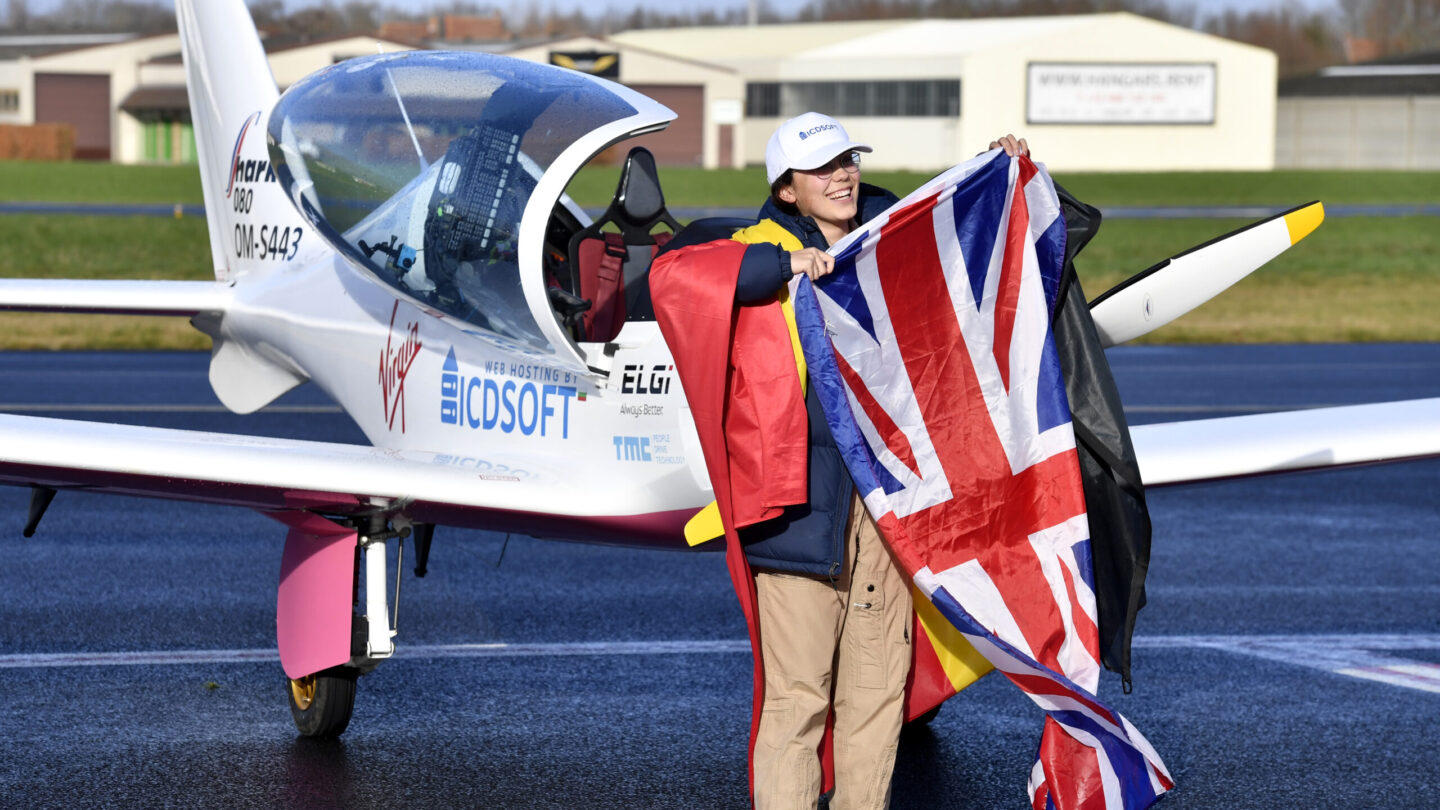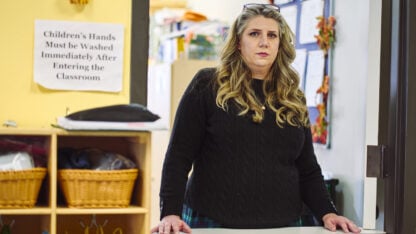Nineteen-year-old pilot Zara Rutherford touched down at an airfield in western Belgium on Thursday, becoming the youngest woman to fly solo around the world, as she closed the loop five months after taking off on her record-breaking journey.
Rutherford’s circumnavigation aboard her Shark UL plane took 155 days – two months longer than planned, thanks to loads of bad weather and visa holdups. Along the way, she crossed enormous stretches of desolate ocean and had to spend weeks in a tiny Siberian village. She also had to alter course to avoid North Korean airspace and wildfires in California.
And, of course, she chronicled it all on social media.
“It’s just really crazy, I haven’t quite processed it,” she told reporters after landing in Kortrijk.
Since her Aug. 18 departure, Rutherford covered 28,000 nautical miles, stopping in 41 countries and five continents. It’s a journey that will land her in the Guinness World Records book, supplanting U.S. aviator Shaesta Waiz, who set the previous record in 2017 at age 30. Last year, Travis Ludlow of the United Kingdom set the overall record for youngest aviator to solo circumnavigate — at age 18.
For anyone contemplating a similar adventure, Rutherford, who was met after landing by her Belgian mother and British father — both pilots themselves — had some simple but direct advice: “Go for it.”
“It takes a lot of time, patience, a lot of work, but it is incredible,” she said.
Celebrating with two weeks of sleep
Her brother was also there to meet her. And her mother, Beatrice, said the family would celebrate together, at least at first. “I think Zara wants to celebrate by sleeping about two weeks,” she added.
Rutherford said sometimes she feared for her life, and at other times just wanted to be home with family.
Speaking with NPR from near Prague on Tuesday just ahead of her final few legs, Rutherford said she was “really excited” to finally complete the journey. “It’s been a long five months – really difficult. I’m looking forward to seeing my family again,” she said.
Rutherford employed Visual Flight Rules throughout the journey, meaning weather and visibility were limiting factors.
Clouds and sudden thunderstorms near the equator were troublesome, she told NPR. “In Singapore, I got quite close to a lightning strike,” she said, adding that she also contended with “severe turbulence” in Alaska and Bulgaria.
Unexpectedly flying through California’s wildfires
One of the things she wasn’t expecting was California’s wildfires. “I was flying along and then the smoke got really bad,” she told NPR. “I was at 10,000 feet at this point, just trying to out climb it, but it wasn’t working out.”
“At one point, I just couldn’t see anymore,” she said. “It got really turbulent.”
But there are at least as many fond memories, she told NPR. Siberia, for example. “It’s very remote and I’ll probably never get a chance to see it again in my lifetime,” she said.
“Alaska was amazing as well. Taiwan was gorgeous. Another highlight was Saudi Arabia, I mean, just stunning scenery. Really kind people as well,” she said.
Rutherford says that growing up, she has seen few women in aviation and computer engineering. Her next mission is to change that.
“Basically my dream is that in the future, if a girl wants to go into aviation or wants to go engineering, it’s not special,” she said. “It’s just like, ‘oh, cool, like, just another person who’s doing a cool thing with their life.’ But it doesn’t matter what gender they are.”
Copyright 2022 NPR. To see more, visit https://www.npr.org.9(MDAxODM0MDY4MDEyMTY4NDA3MzI3YjkzMw004))

9(MDAxODM0MDY4MDEyMTY4NDA3MzI3YjkzMw004))









